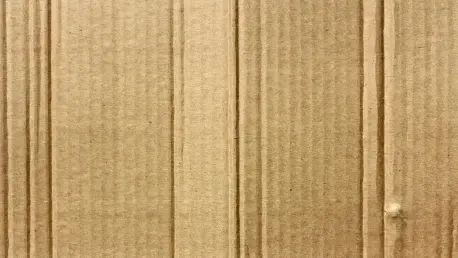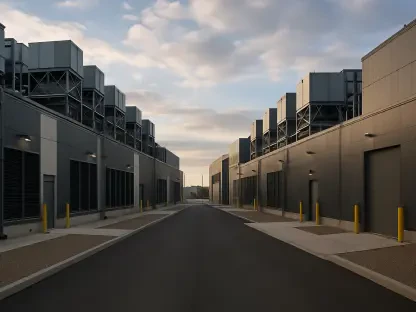In the evolving landscape of recycling and repulping standards for packaging materials, Christopher Hailstone lends his expertise to uncover the latest updates to the voluntary standards by the American Forest & Paper Association (AF&PA) and the Fibre Box Association. With his extensive background in energy management and grid reliability, Christopher offers a comprehensive view of how these changes are shaping the industry.
What prompted the AF&PA and the Fibre Box Association to update the voluntary standards for recycling coated or treated corrugated fiberboard?
The need for updating these standards often arises from technological advancements and evolving manufacturing practices that necessitate a fresh look at how repulping and recycling are assessed. It’s about aligning industry standards with current capabilities and ensuring that the materials we use can be processed effectively by today’s mills. This update is particularly critical for identifying and validating the recyclability of innovative coatings and treatments that have emerged since the last update a decade ago.
Can you explain the key changes made in the updated voluntary standards compared to the previous version from 2013?
The most significant change is the introduction of a comprehensive screening method that evaluates both repulpability—how easily the fiberboard can be broken down—and recyclability, which considers the impact of these materials on mill operations and end products. By establishing benchmarks for percent fiber yield and rejects, the industry can more accurately assess which materials are truly recyclable according to current standards.
What are the benefits of having an industry-supported set of test protocols for evaluating the repulpability and recyclability of corrugated fiberboard?
Having an industry-supported approach ensures consistency and credibility in how materials are evaluated. It means companies across the sector are working from the same playbook, which not only promotes fair competition but also encourages innovation in designing more sustainable and efficient packaging materials. These protocols provide a structured way to measure performance and environmental impact, crucial for both industry leaders and newcomers striving for environmentally conscious solutions.
How does the joint committee ensure that the updated standards align with current mill technology and manufacturing practices?
The joint committee is composed of members directly involved in the manufacturing and technological aspects of the industry, providing insights directly from the field. They engage in continuous dialogue with mills and stakeholders to confirm that the standards reflect the realities of production floors, ensuring they are applicable and beneficial. This ongoing interaction helps maintain a relevant and forward-looking approach to recycling standards.
What factors are considered when determining the repulpability and recyclability of coated or treated corrugated fiberboard?
When determining these factors, the committee looks at how the coatings or treatments affect the material’s ability to break down during processing and their subsequent impact on the efficiency of mill operations. Other considerations include the end product quality and how these materials contribute to the overall sustainability of the recycling stream. Essentially, it’s a balance between technical viability and environmental responsibility.
Can you describe the screening method established to evaluate repulpability and recyclability in the updated standards?
The screening method involves running controlled tests that simulate standard mill processing conditions. During these tests, variables such as fiber yield and the amount of material that cannot be repulped—known as percent rejects—are measured. By analyzing how the tested materials influence these factors, the standards can ensure that only truly recyclable materials are endorsed, supporting a more efficient recycling chain.
How are percent fiber yield and percent rejects measured in the repulpability test procedures?
These measurements are derived from processing the material under controlled conditions that replicate real-world mill environments. Fiber yield is determined by the amount of usable fiber recovered at the end of the process, while rejects account for the non-recoverable portions. This quantitative approach helps clarify which products meet recyclability criteria and which do not, ensuring clarity and transparency.
What impact does the updated standard have on mill operations and the quality of finished products?
By adopting these updated standards, mills can improve their operational efficiency since the materials processed will be closer aligned with what current technology can handle. This leads to higher quality finished products with lower production waste. Additionally, the standard encourages mills to innovate and optimize, pushing the industry forward in both performance and sustainability.
How does this update encourage the development of more recyclable and environmentally friendly corrugated fiberboard?
The update acts as a catalyst for innovation by setting clear guidelines that must be met for materials to be considered recyclable. This, in turn, encourages manufacturers to develop coatings and treatments that enhance recyclability without compromising performance, all while meeting customer needs. It’s a push towards creating packaging solutions that are not only effective but also environmentally responsible.
What innovations in coatings or treatments does the industry anticipate developing as a result of this updated standard?
We might see advancements in water-resistant coatings that break down more efficiently or new treatments that achieve desired properties without compromising fiber recovery. There’s also a growing interest in biodegradable alternatives to traditional treatments. These innovations are likely to enhance the versatility and sustainability of packaging materials, aligning more closely with the evolving demands for greener products.
How do you see the voluntary standards impacting the recycling industry as a whole in the long term?
In the long term, these standards will likely drive significant shifts in the types of materials that enter the recycling stream, prioritizing those that are easier to process and more sustainable. This could foster a more circular economy where goods are consistently repurposed and reused, reducing waste and resource consumption. Overall, adherence to these standards will be a crucial part of advancing recycling practices industry-wide.
Why is it important for the industry to continuously improve standards, and what future improvements do you foresee?
Continuous improvement is vital because technology, consumer needs, and environmental concerns are always changing. Future improvements might include integrating digital tracking systems to better manage material flows and enhancing collaboration with global partners to harmonize recycling standards across borders. As we aim for higher sustainability, the standards will need to accommodate innovations and challenges that come with a growing focus on green initiatives.









